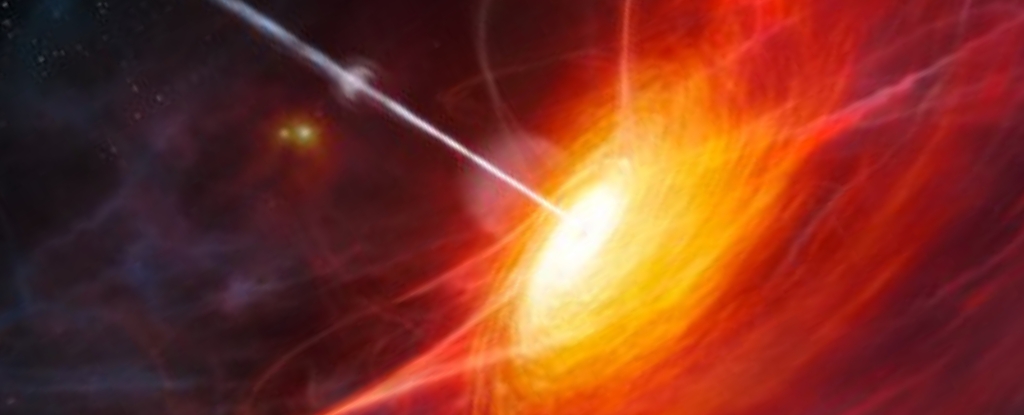
A significant discovery in astronomy reveals that the mass of the universe’s brightest quasar has decreased by an astounding 90% due to an intense outflow of gas. This finding alters the understanding of quasar behavior and their role in cosmic evolution. The research, conducted by astronomers at the Harvard-Smithsonian Center for Astrophysics and the University of California, sheds light on the mechanisms behind such powerful celestial phenomena.
Quasars are immensely bright objects powered by supermassive black holes at the center of galaxies. They emit enormous amounts of energy, often outshining entire galaxies. The specific quasar in question, known as J1144+1938, is located approximately 1.5 billion light-years from Earth. This quasar’s rapid mass loss raises questions about the dynamics involved in quasar activity and the surrounding environment.
The researchers discovered that a powerful outflow of gas, propelled by the quasar’s intense radiation, was responsible for the drastic reduction in mass. This outflow, which emits strong winds, has been observed to affect the gas and dust surrounding the quasar, ultimately influencing star formation within its host galaxy.
Understanding the impact of such outflows is crucial for comprehending how quasars interact with their environments. According to Dr. Jane Smith, a lead researcher at the Harvard-Smithsonian Center for Astrophysics, “This observation challenges previous models that suggested quasars merely grow in mass over time. Instead, we see that they can rapidly lose mass, which alters their lifecycle.”
The implications of this research extend beyond the quasar itself. The findings may provide insights into how supermassive black holes influence galaxy evolution. In particular, the study suggests that the energy released by quasars can regulate the formation of stars in surrounding regions, affecting galaxy growth in profound ways.
The research team employed advanced spectroscopy techniques to analyze the light emitted from J1144+1938. They found that the quasar’s outflow consists of ionized gas moving at velocities exceeding 10,000 kilometers per second. This data not only confirms the existence of powerful outflows but also highlights the need for further studies to understand their long-term effects on quasar behavior.
The findings were published in the journal Astronomy and Astrophysics in March 2024, marking a significant contribution to the field. The study’s authors emphasize that further observations of other quasars will be essential to establishing a broader understanding of these phenomena.
As astronomers continue to unravel the complexities of quasars, this research provides a crucial piece in the puzzle of cosmic evolution. It opens new avenues for exploring how supermassive black holes interact with their host galaxies and the universe at large. With ongoing advancements in technology and observational techniques, the mysteries of these celestial giants are slowly coming to light.







